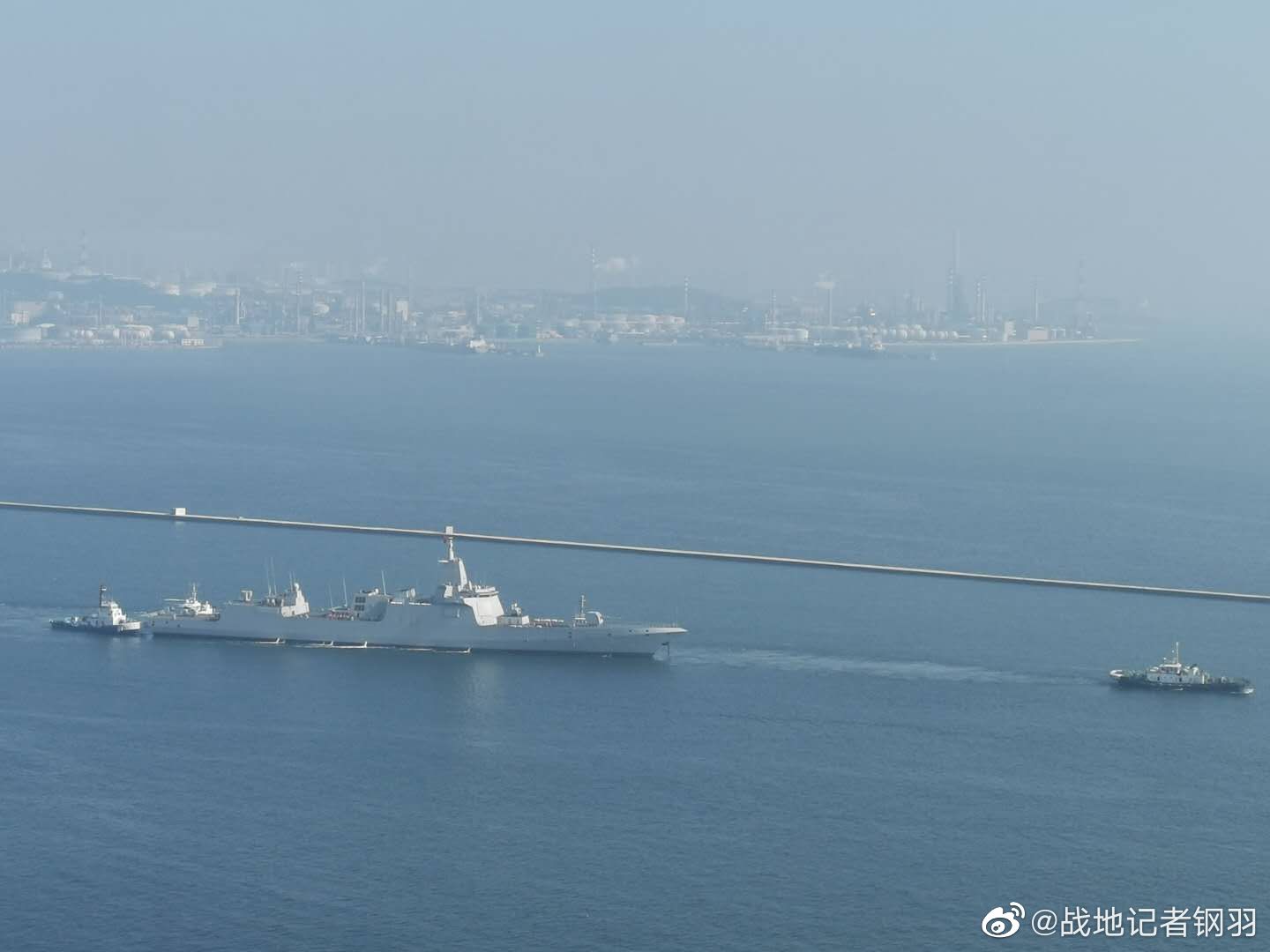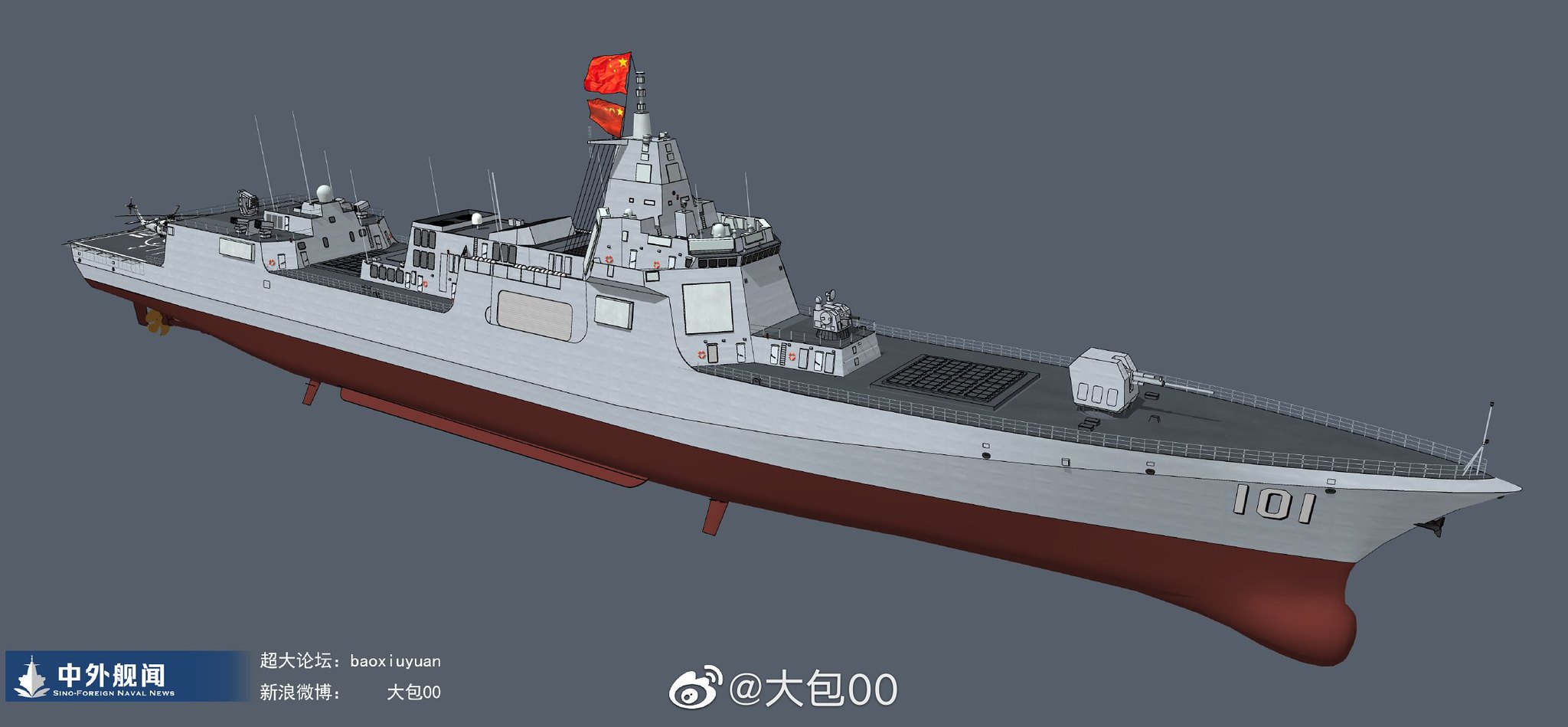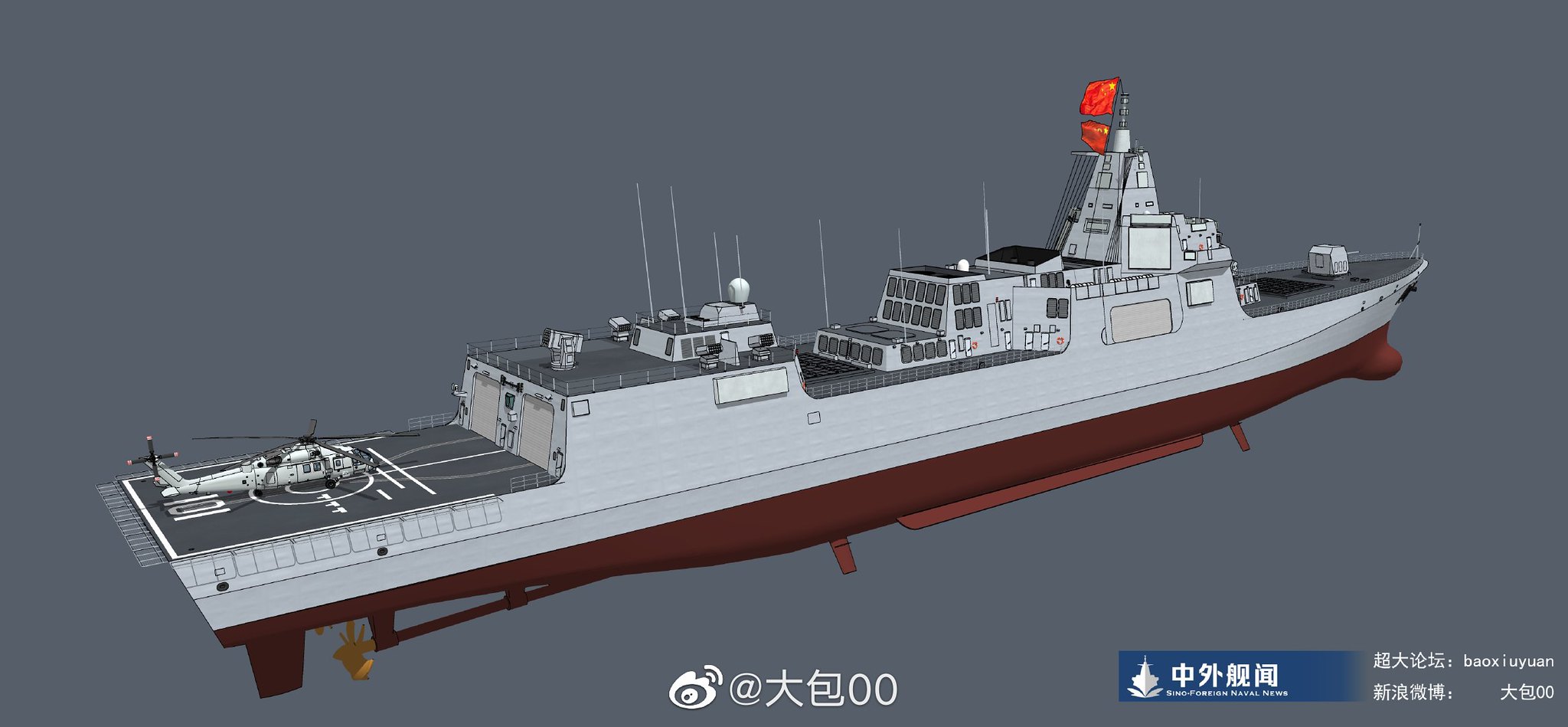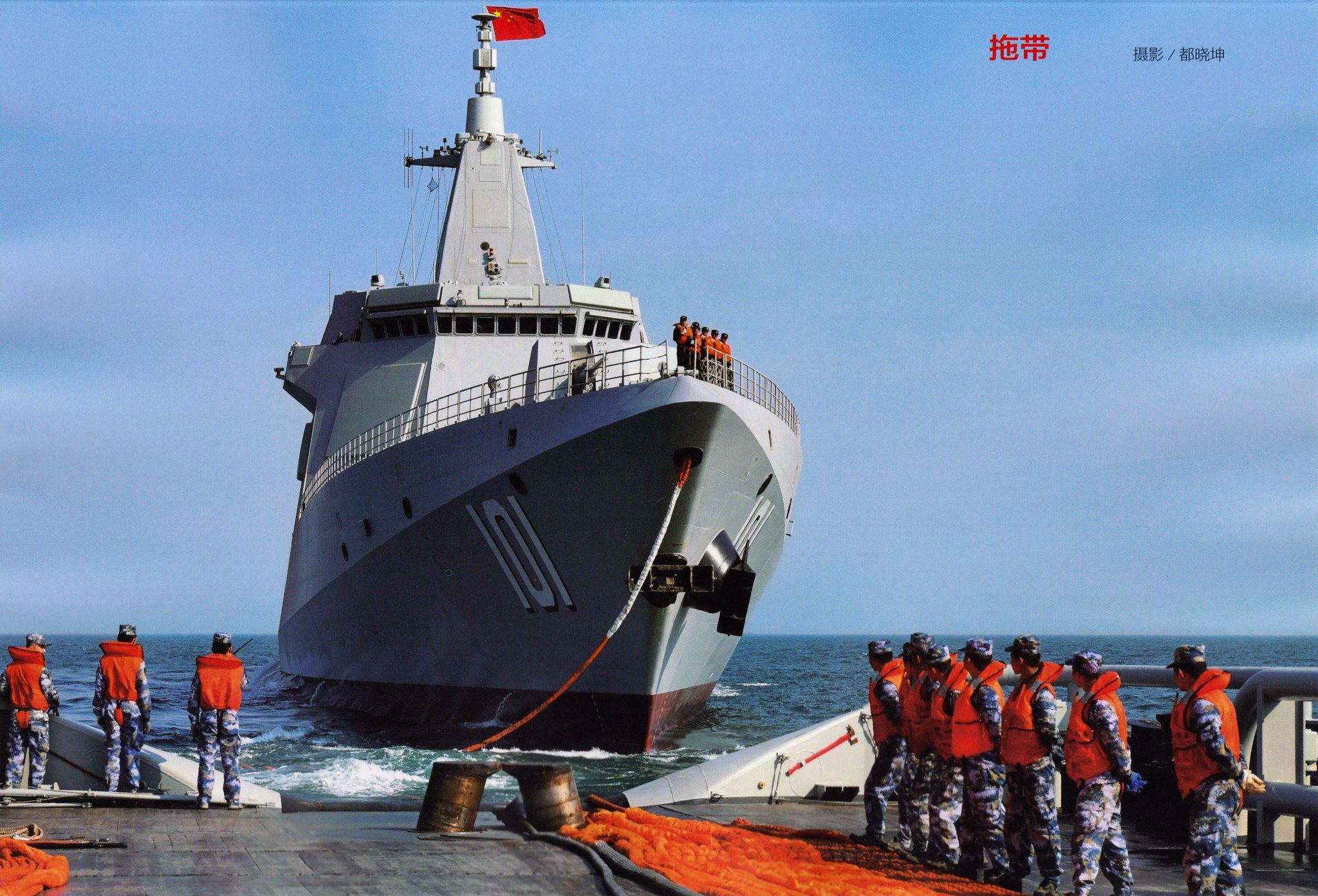You are using an out of date browser. It may not display this or other websites correctly.
You should upgrade or use an alternative browser.
You should upgrade or use an alternative browser.
055 DDG Large Destroyer Thread
- Thread starter FarkTypeSoldier
- Start date
- Status
- Not open for further replies.
by78
General
What's the deal with that? RCS and IR reduction?
The addition is faceted and clearly designed with reducing RCS in mind. It could be that they needed to lengthen the forward exhaust stack, and this is the RCS reduction solution they came up with.
The addition is faceted and clearly designed with reducing RCS in mind. It could be that they needed to lengthen the forward exhaust stack, and this is the RCS reduction solution they came up with.
Agreed, but why extend the forward exhaust in the first place?
I imagine it's because it provides some IR suppression benefit.
Is that some kind of mansion dating back to Tsarist occupation period (1900-1905)?Additional images of Dalian's 055 (with modified forward exhaust stack) on sea trials.
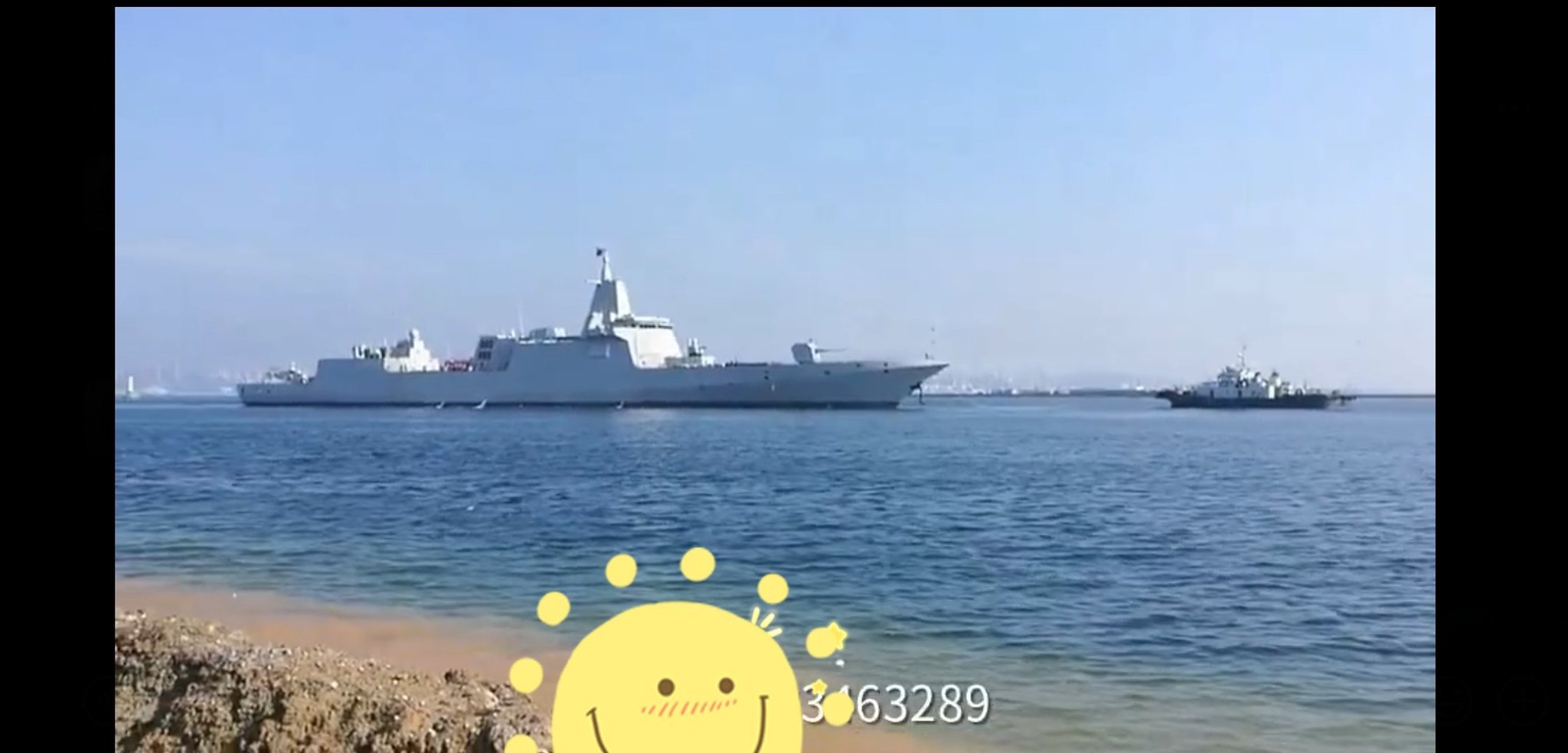


Or maybe the original smoke stacks weren’t tall enough to properly vent the exhaust and they were getting downdraft.Agreed, but why extend the forward exhaust in the first place?
I imagine it's because it provides some IR suppression benefit.
Agreed, but why extend the forward exhaust in the first place?
I imagine it's because it provides some IR suppression benefit.
Then why not extend the rear one too? I suspect they have smoke/draft issues around the bridge and sensors, note the angled extension promoting flow towards the rear.
That seems to be the logical explanation. Russians had to modify the stack top on Grigorovich frigates for exactly the same purpose.Then why not extend the rear one too? I suspect they have smoke/draft issues around the bridge and sensors, note the angled extension promoting flow towards the rear.
By the way, there is something added to the top of mast as well. The picture is too grainy to say what it is.
This image really shows how disproportionate the lateral panels are compared to the other ones. At least half a meter deep. And it's perfectly sealed so definitely electronics and stuff..
I've be inclined to think that it might be where the U/VHF radar is. China has already developed its own AESA meter-wave band radar with the JY-27A so they could potentially hide the arrays here, and only U/VHF antennas would require such depth. At the same time it's rectangular in length so if it's a radar array then it should be more "horizontally agile", which would kinda reduce the forward blind spot (forward blind spot that was already existing with the 517 on 052C/D, which was located behind the bridge) .
But that's only one of the many hypothesis around these panels, and where the Meter-wave band radar can hide (if it's even exist). The mystery around this ship gives its charm too don't you think
This image really shows how disproportionate the lateral panels are compared to the other ones. At least half a meter deep. And it's perfectly sealed so definitely electronics and stuff..
I've be inclined to think that it might be where the U/VHF radar is. China has already developed its own AESA meter-wave band radar with the JY-27A so they could potentially hide the arrays here, and only U/VHF antennas would require such depth. At the same time it's rectangular in length so if it's a radar array then it should be more "horizontally agile", which would kinda reduce the forward blind spot (forward blind spot that was already existing with the 517 on 052C/D, which was located behind the bridge) .
But that's only one of the many hypothesis around these panels, and where the Meter-wave band radar can hide (if it's even exist). The mystery around this ship gives its charm too don't you think
Sorry but the low side of the ship and under the bridge wing is usually where the ECM is at least to US parlance. If you take the Burke, relative to the same position, you will find the SLQ-32 SEWIP.

The reason why ECM is placed on such a low spot is because that's where you expect the antiship missile is headed, right down to your broadside and low in the water. So you put the ECM where it has the best and closest view of the missile's radar, but you can't put it too low where the ECM gets wet. Look at the Shandong and the Type 075, you will the ECM devices in the middle of the ship and below the deck line. In fact, the ECM devices get a better position relative to the approach of the antiship missile to the side of the ship compared to both the gun and missile CIWS. The reason why it should not be radar is that its too low in the water which limits its radar horizon and it has a very limited arc left and right compared to the fully rotational Type 517M on the 052D.
If I have to dig up all the threads to find the picture where those panels on the 055 were actually open during construction, and whatever is in there doesn't look like a UHF/VHF antenna and is too small to be such.

- Status
- Not open for further replies.


